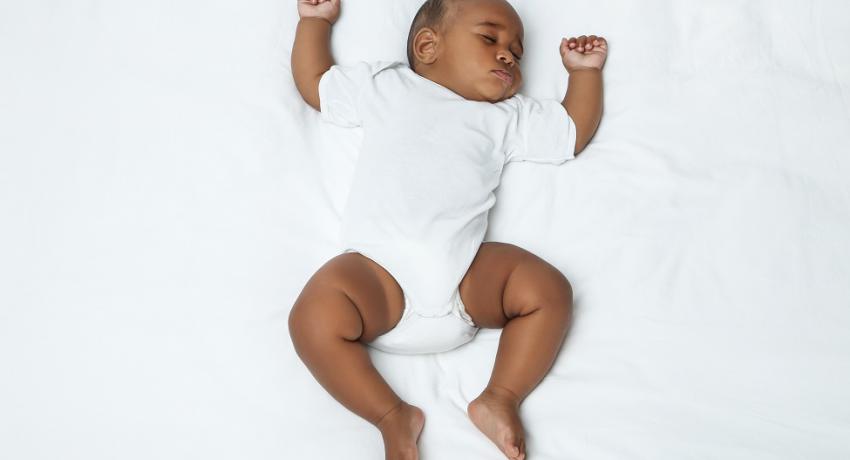In recognition of Sudden Infant Death Syndrome (SIDS) Awareness Month, it is important to highlight the most impactful recommendations beyond placing an infant to sleep on their back.
Share your room with baby and keep baby close to your bed but in their own crib or bassinet.
Room sharing reduces the risk of SIDS. Baby should not sleep in an adult bed, on a couch, or on a chair alone, with you, or with anyone else. Having a separate safe sleep surface for the baby reduces the risk of SIDS and the chance of suffocation, strangulation and entrapment.
If you bring your baby into your bed for feeding or comforting, remove all soft items and bedding from the area. When finished, put baby back in a separate sleep area made for infants, like a crib or bassinet, and close to your bed.
Couches and armchairs can also be very dangerous for babies, if adults fall asleep as they feed, comfort, or bond with baby while on these surfaces. Parents and other caregivers should be mindful of how tired they are during these times.
There is no evidence for or against devices or products that claim to make bed sharing "safer."
Use a firm and flat mattress in a safety-approved crib*.
A firm surface maintains its shape and will not indent or conform to the shape of the infant’s head when the infant is placed on the surface. Soft mattresses, including those made from memory foam, could create a pocket (or indentation) and increase the chance of rebreathing or suffocation if the infant is placed in or rolls over to the prone position.
Never place baby to sleep on soft surfaces, such as on a couch, sofa, waterbed, pillow, quilt, sheepskin, or blanket. These surfaces can be very dangerous for babies. Do not use a car seat, stroller, swing, infant carrier, infant sling or similar products as baby's regular sleep area. Following these recommendations reduces the risk of SIDS and death or injury from suffocation, entrapment, and strangulation.
Keep baby’s sleeping area free of soft and loose bedding, such as bumpers, stuffed animals and blankets.
Soft objects, such as pillows and pillow-like toys, quilts, comforters, sheepskins, and loose bedding such as blankets and non-fitted sheets, can obstruct an infant’s nose and mouth. An obstructed airway can pose a risk of suffocation, entrapment, or SIDS.
Evidence does not support using crib bumpers to prevent injury. In fact, crib bumpers can cause serious injuries and even death. Learn more about why keeping crib bumpers out of baby's sleep area is the best way to avoid these dangers.
Resources:
- American Academy of Pediatrics, SIDS and Other Sleep-Related Infant Deaths: Updated 2016 Recommendations for a Safe Infant Sleeping Environment
- National Institute of Child Health and Human Development (NICHD), Safe Infants Sleep Basics
*A crib, bassinet, portable crib, or play yard that follows the safety standards of the Consumer Product Safety Commission (CPSC) is recommended. For information on crib safety, visit https://www.cpsc.gov or contact CPSC at 1-800-638-2772.

